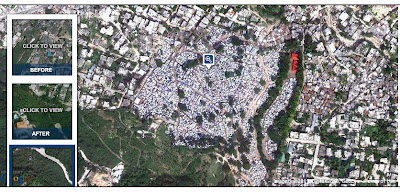WSJ:
Rare-Earth Ripple Effect Hits Gasoline Producers
I don't know what the wholesale price of gasoline is and I don't know what the increase in cost of the rare-earth material will be, but assume for simplicity sake they are $2.00 and $.50 respectively (gas price is probably too low and mineral cost is probably too high).
""The skyrocketing cost of rare-earth metals from China is pushing up the cost of gasoline production in the U.S., the latest sign of the wide-reaching impact of Beijing's decision to restrict exports of the minerals.
Prices for some of the chemicals refiners use to process gasoline have risen exponentially after China, which controls about 95% of the world's rare-earth supply, said it would reduce exports of the metals by 35% in 2011.""
The cost of producing a gallon of gasoline may increase for gasoline refiners, unless they can off-set the decrease in price of rare-earth minerals with a decrease in some other cost of production. Let's assume they cannot cut another cost. This is the graph of the Market for Gasoline in equilibrium.
At Point "A" the market quantity supplied is 100 gallons (again, a simplistic number for illustration purposes). Ceterus Paribus, if the cost of producing gasoline increases by $.50 then to produce 100 gallons the refiner will need to receive $2.50, Point "B". See graph below:
If "Supply*" is our market supply curve, then we have to assume that at every price and quantity supplied combination on Supply* the cost of production will increase $.50 as well. The next series of graphs illustrates this. Look at each one carefully.
Now we have Points A, D, B and E that lie parallel to the LEFT of Supply*. If we remove the clutter and connect the points, we find we have a new supply curve, Supply 1, that represents a DECREASE in Market Supply.
Only one of these points intersects with Demand*--Point "D". We cannot forget our demand curve! In reaction to the increase in price, driven on the supply-side, the QUANTITY DEMANDED decreased. We moved up and to the left on our demand curve, just as the Law of Demand would suggest. We have reach a new market equilibrium price of $2.25 and market quantity of 75 gallons. Notice the market price did not increase by the full $.50 increase resource cost. Because of relative elasticities of demand and supply (slopes of the two curves), the increase in cost of production is going to be jointly shared between producers and consumers. In this case, the producer will absorb roughly $.25 and the consumer $.25 as well.
As an alternative view to see how the new equilibrium's are reached, look at this graph:
Assume at our original equilibrium Point "A" the market does not fully recognize what went on. At the market price $2.00 the quantity supplied would be 50 gallons, Point "C", but the quantity demanded would still be 100, Point "A". The market is in disequilibrium where quantity supplied is LESS than quantity demanded. There is a SHORTAGE in the market of 50 gallons. The price will be bid up--suppliers will increase the quantity supplied at higher prices (Point "C" to "D") and demanders will decrease the quantity demanded at higher prices (Point "A" to "C"). The suppliers and the demanders will each move along their respective curves until a new equilibrium price of $2.25 and market quantity of 75 are reached at Point "D". The market has now been cleared of the shortage of gasoline.
Stay tuned to your gas station of choice and monitor the prices...guessin' a change is a comin'....
















